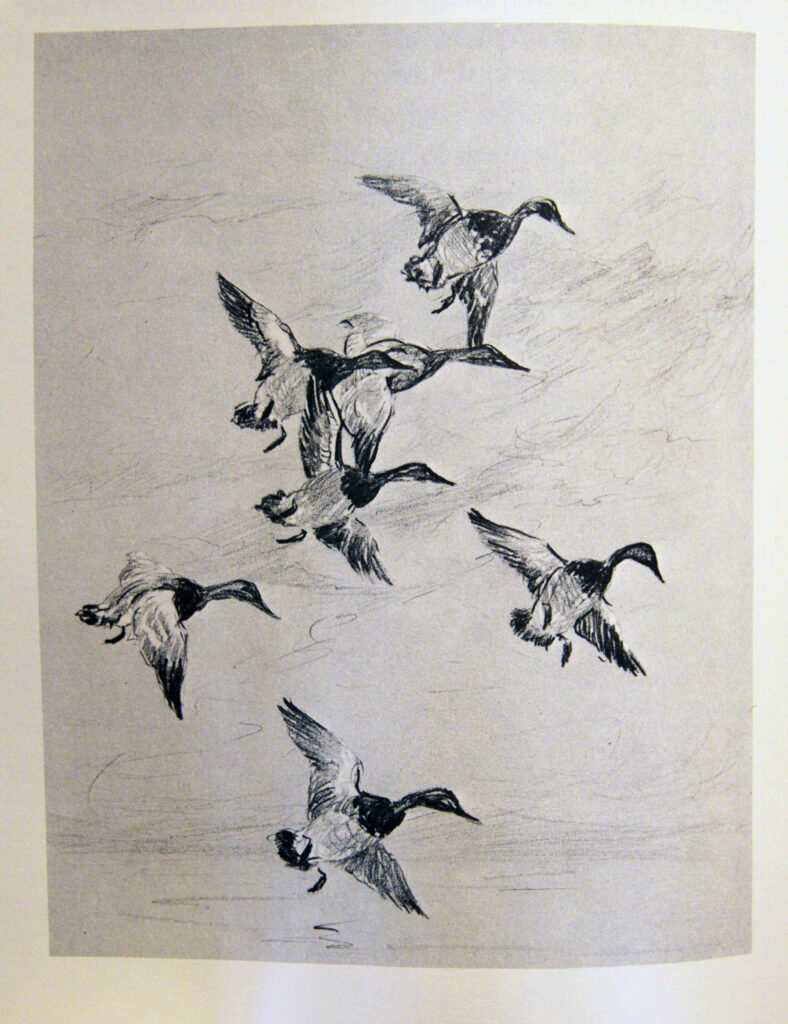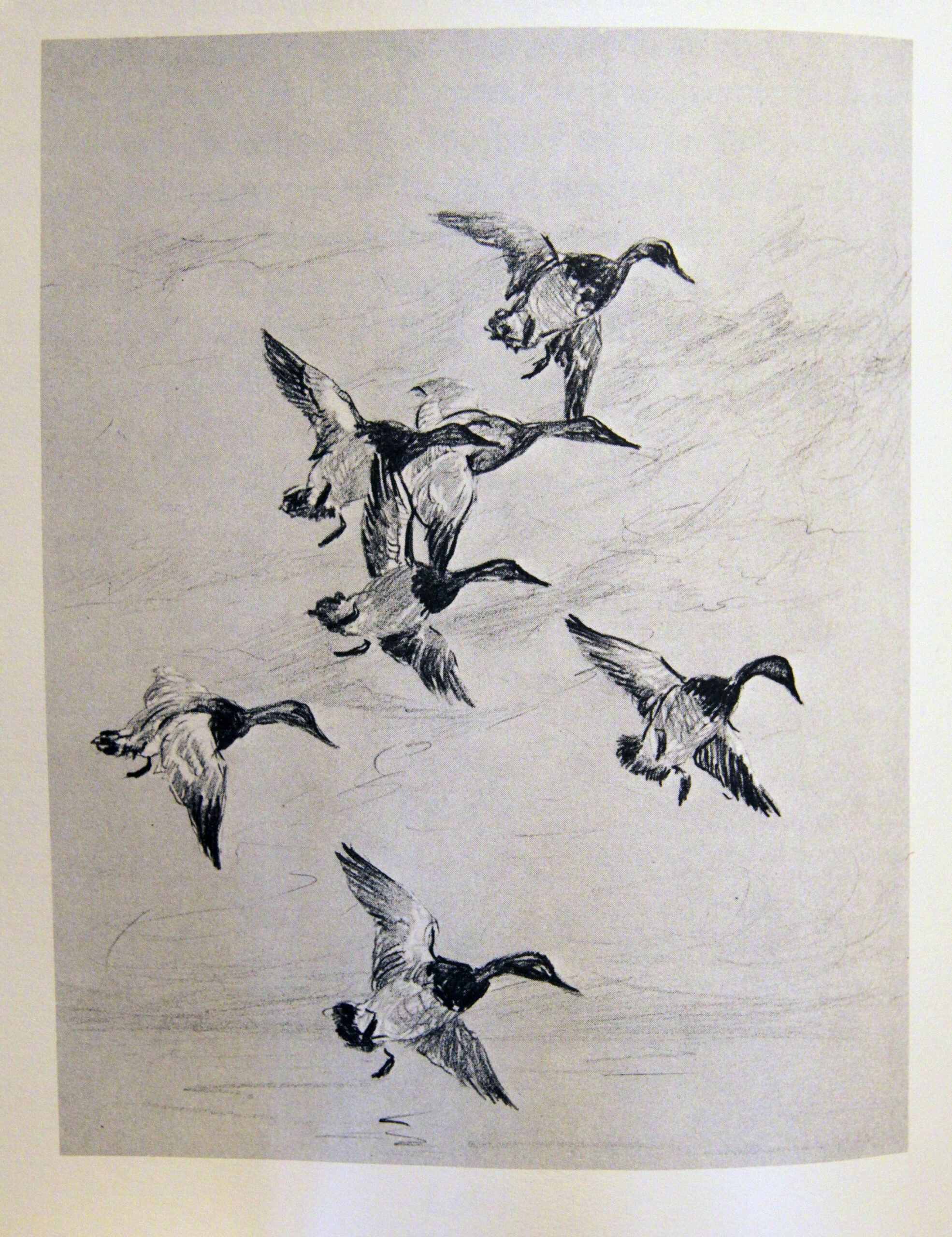
Roland H. Clark was an artist, author, and sportsman who was particularly well known for his etchings of game birds, such as ducks, geese, woodcock, and quail. He was the son of Henry Walker and Fanny Elizabeth (Hunt) Clark of New Rochelle, New York where he was born on April 2, 1874. Roland Clark went to private schools in New York City and studied art under tutors and at the Art Students League where J. Carroll Beckwith was one of his instructors. As a youth he enjoyed sailing, fishing, and horseback riding, but his greatest pleasure was hunting waterfowl in the marshes around Long Island Sound. After he finished school, he combined his work with his favorite recreation and made sketching-hunting trips to Scotland, Canada, and many hunting areas along the East Coast. They have said that he was often torn between shooting or sketching a bird, and as a result in a moment of indecision would sometimes lose both the bird and the drawing. family lived in Gloucester on Mobjack Bay, an offshoot of Chesapeake Bay, for twenty-two years. Clark went into the oyster trading business for a while, but the area had so much to offer a wildfowl artist that he could not permit himself to be diverted for long. Using sketches made from life, he did some five hundred etchings, many of which were exhibited in one man shows in the New York area. Some were used to illustrate the books he wrote, and others were purchased for The Library of Congress in Washington, D. C.. Clark wrote his first book in 1931, entitled “Stray Shots,” it told of his hunting experiences and was illustrated by thirteen of his original drypoint etchings. The edition was limited to five hundred copies. In 1937, he produced “Gunner’s Dawn” which contained further reminiscences of hunting trips and was illustrated by an original etching plus reproductions of five of his oil paintings. The following year “Roland Clark’s Etchings” appeared with reproductions of seventy etchings. Clark was selected to do the 1938 Federal Duck Stamp Design. The original art that convinced the honorary limited competition was an etching of five birds where three birds were then blocked off. The first edition was unknown but estimated to be possibly about three hundred. There were several printings of the stamp design. “Pot Luck” was another collection of stories written and illustrated by the author that came out in 1945. Mr. Clark was a charter member of The American Sporting Artists and a member of Ducks Unlimited, Inc. He died at the age of 83 in the Norwalk Hospital of Norwalk, Connecticut on April 13, 1957.

